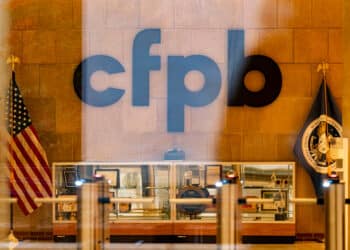Industry Awaits Clarification on Military Lending Act

As Memorial Day approaches and the nation remembers those who have died in active service, lenders continue to grapple with how to finance ancillary products for active-duty servicemembers.
Earlier this year, the Department of Defense issued a bulletin announcing that the Military Lending Act now applies to the financing of ancillary products, which requires originators to calculate the proper Military Annual Percentage Rate (MAPR) for the lender’s servicemember borrowers.
“The entire crux of the MLA discussion hinges on servicemembers paying more than a 36% MAPR,” Jennifer Reid, vice president of Enterprise Alliance Partners and Automotive Services at Equifax, told the Center for Auto Finance Excellence. “Dealers and lenders must know which of the fees or ancillary product costs financed need to be included with the finance charges in the MAPR calculation as it is different than the Truth in Lending Act (TILA) APR calculation.”
The Military Lending Act (MLA) was enacted in 2006 and implemented by the Department of Defense, protects active-duty members of the military, their spouses, and their dependents from certain lending practices. These practices could pose risks for servicemembers and their families and could pose a threat to military readiness and affect servicemember retention, according to the Federal Deposit Insurance Corp. The law previously had not applied to auto lenders but this new provision has lenders scrambling to calculate the proper MAPR.
To ensure that the MAPR does not exceed 36%, dealers and lenders must know what’s covered. Loans that include financing related to the vehicle being purchased had broadly been exempted from MLA regulation. However, new guidance from the DOD is no longer exempting the financing of guaranteed asset protection insurance; credit life and disability insurance; hybrid purchase money with a cash advance transaction that is not expressly intended to finance vehicle; and the purchase price of the vehicle including negative equity of trade loans.
Because of this regulatory change, many lenders have scaled back financing it because the next best alternative is to offer GAP through an unsecured loan, which most lenders want to avoid, Kenneth Rojc, managing partner of Nisen & Elliott LLC’s Automotive Finance Group, said during a panel at the Auto Finance Performance & Compliance Summit.
But there is one way to avoid having to deal with the nuances of the MLA, but this only applies to lenders who offer a lease product. “Believe it or not, the MLA does not apply to closed and consumer leasing,” he said. “So if you have a lease product, you could offer that a viable alternative. The MLA would not apply.”
Additionally, due to lobbying efforts from various trade associations, there may be a rollback on the DOD’s MLA guidance coming in a few weeks, he said.










